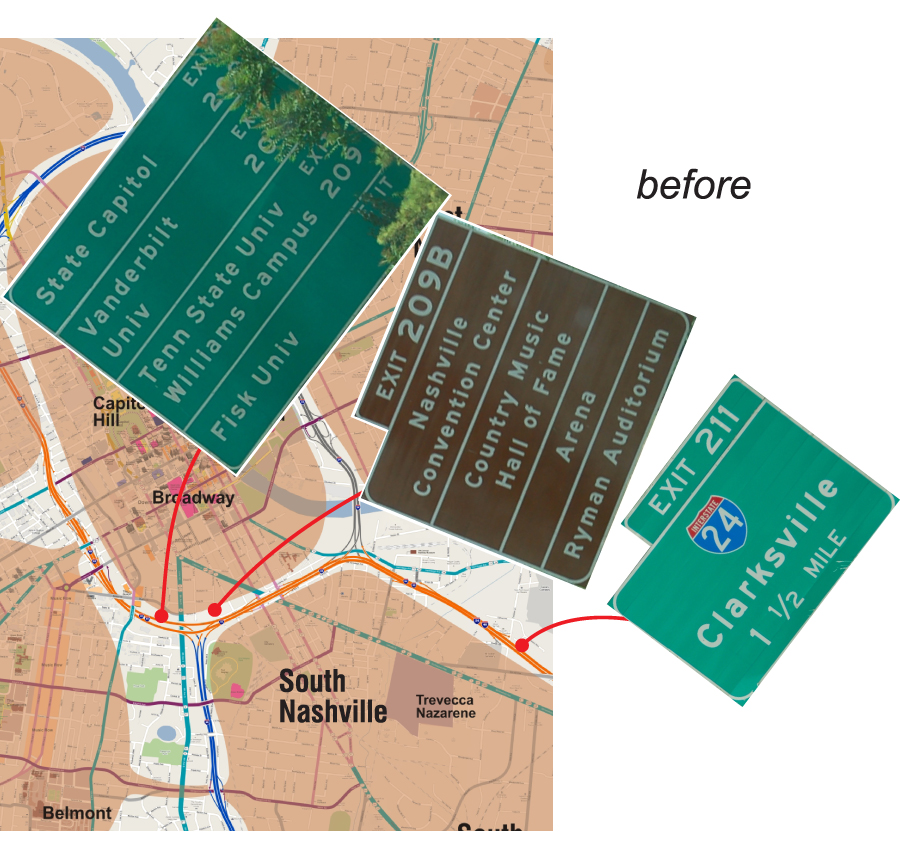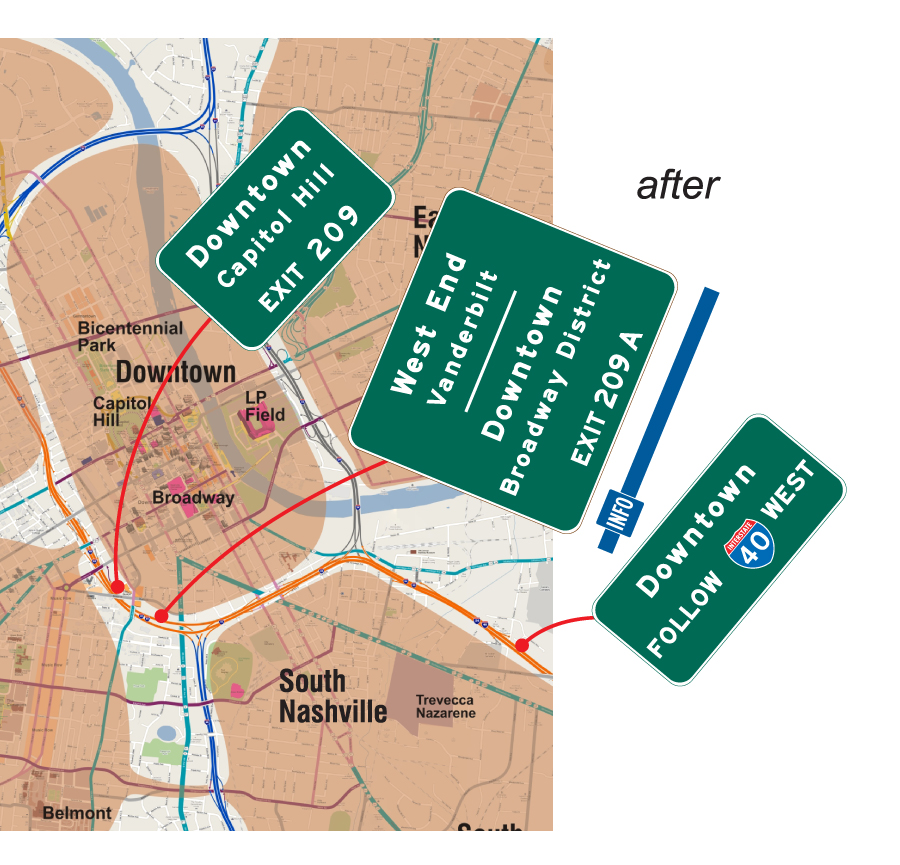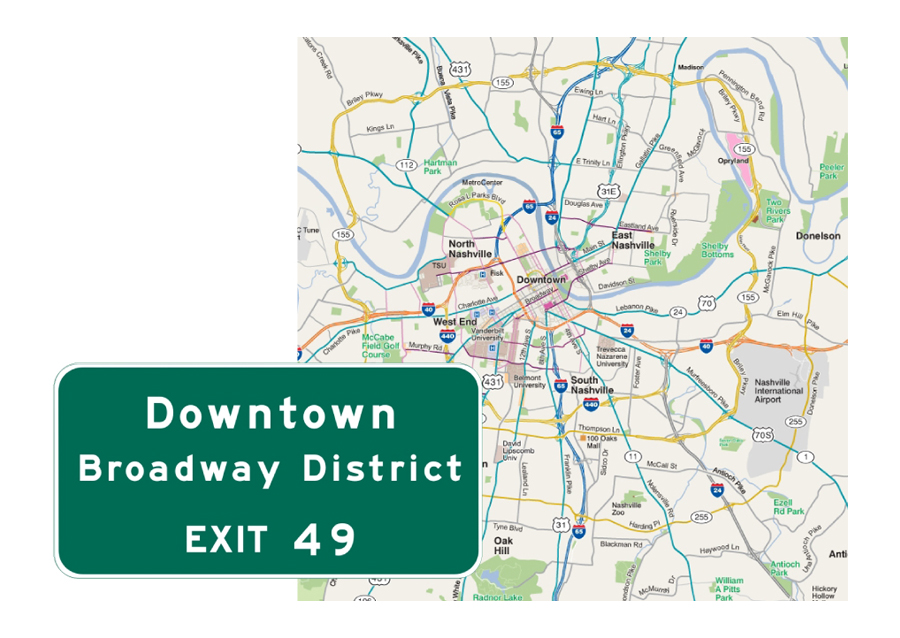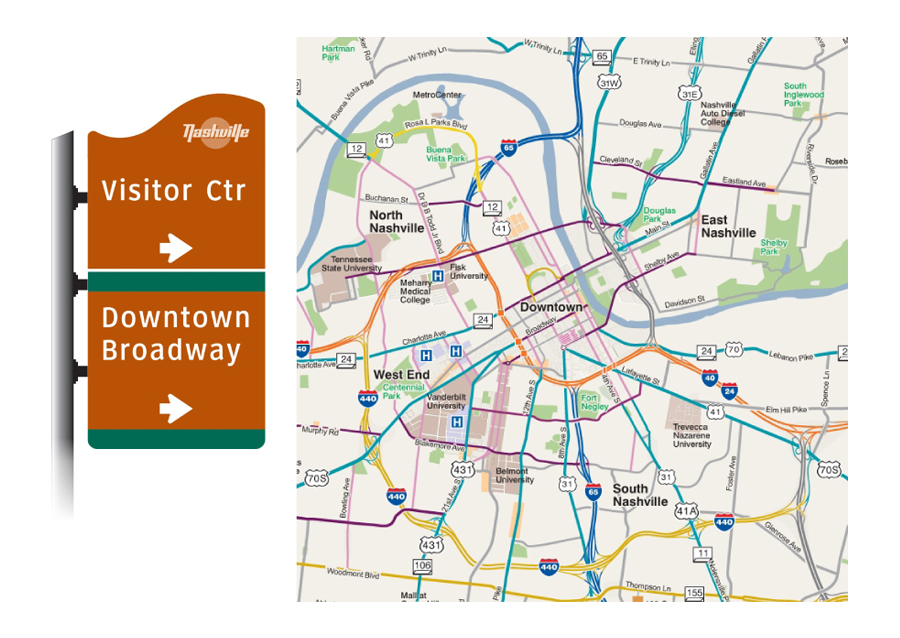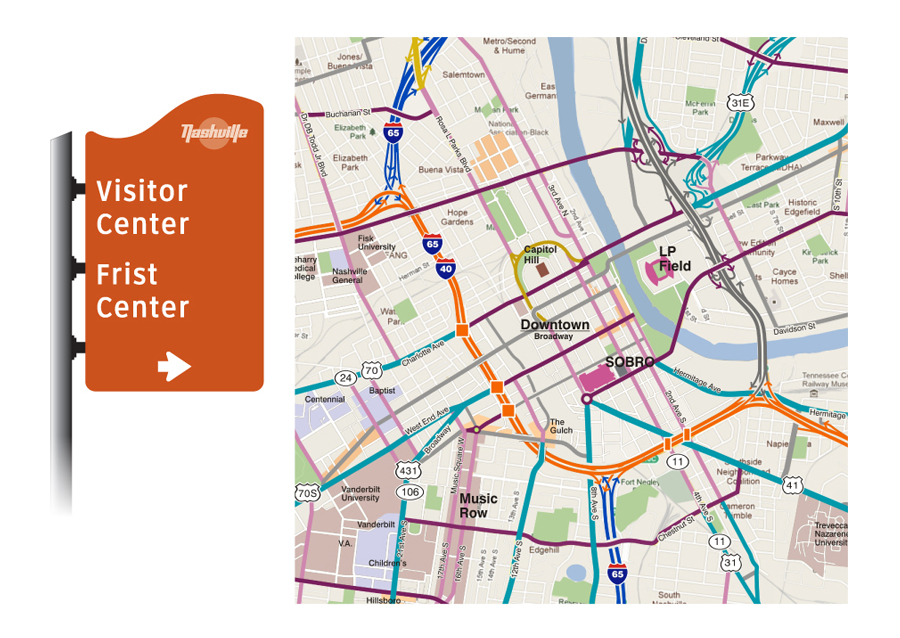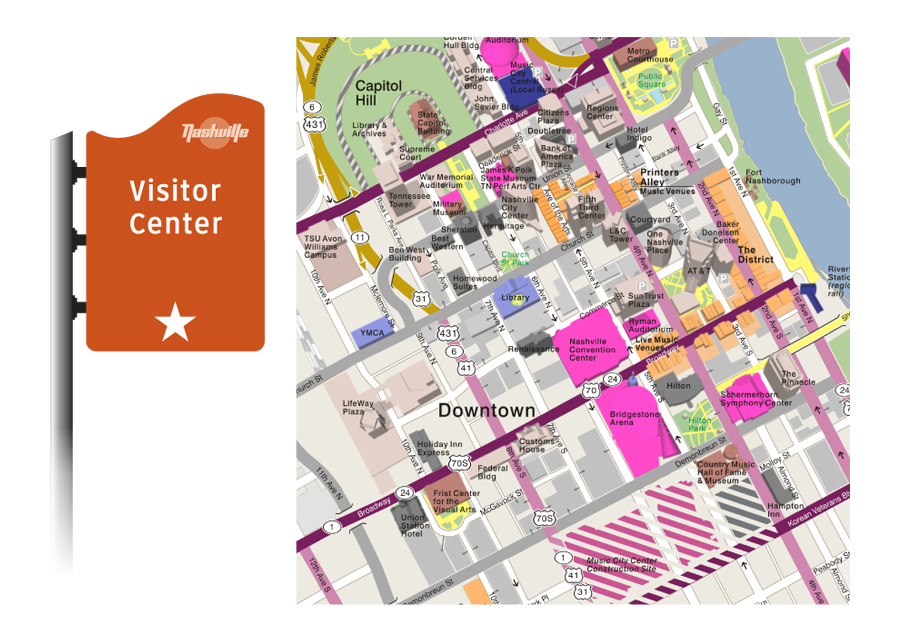Therapy for Nashville’s driving disorder
The loop of expressways around Downtown Nashville has been infamous for decades. It’s where I-40, I-65 and I-24 collide, mingling cardinal directions along the co-numbered sections with seeming abandon. For example, you follow I-24 WEST from the airport to head to points north and EAST within the County (yes, over a longer distance I-24 does make its way west eventually). Driving south on I-65 from north of town, you come to its junction with I-40. Which way do you go to get to Nashville? No sign will tell you. In fact, so many drivers continue straight (heading west) at that point that the gas station-turned-window-tinting firm at the next exit gets so many lost drivers wondering where Nashville is that it stocks a good supply of Xeroxed maps to guide people back. Of course (ha ha ha), you take I-40 EAST at that junction to head due SOUTH to Downtown Nashville.
But what about the signing? Aren’t there any signs pointing to Nashville? No, not once you are technically “inside” Nashville. Federal rules dictate that you have to point to the next “control” cities at the junctions of major highways. To wit, there is a moment on the trip from the airport heading towards Downtown, approaching a split in the highway, where you can see the skyline of the city ahead of you. What do the signs point you to? Everything but Downtown: Huntsville, Memphis, Clarksville and Louisville. What about the above I-40 split from I-65? Signs point to Huntsville, Knoxville and Memphis.
What could be done about this? Informing Design had a solution: a systematic intervention of signs for “intermediate” destinations — Downtown, Vanderbilt/West End, North Nashville and East Nashville — the missing links between exits naming local streets and the interchanges naming far-away cities. But first it had to achieve a near-impossible task. It had to convince two dozen or so major institutions to agree to take down existing supplemental signs bearing their names along the inner loop in order to make room for these new “city district” signs. And the Tennessee Department of Transportation said it had to be unanimous (with them secretly chuckling, we think, that that would never ever happen).
Five years later, it happened. What convinced proud Universities and Museums and Attractions to let their signs be removed (something that almost never happens nation-wide)? There were two reasons. First, the heads of these institutions knew all too well that Nashville’s driving disorder of mingling interstates confused their visitors. And second, Informing Design spent five years working with these institutions, using its signature approach to devise and install a local road wayfinding sign system to guide visitors once they got off at an exit. At the same time, the message load on supplemental signs around the loop was going to be able to be reduced by almost half, restoring the expressways in the loop to what one transportation official described as a pristine “virginal state,” not only making it easier to find your way but also eliminating unsightly clutter.




